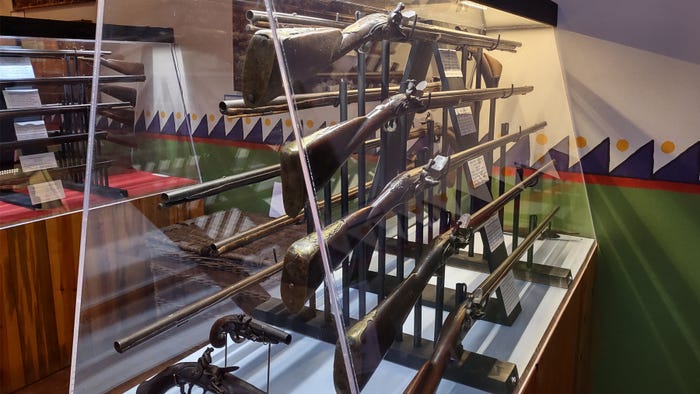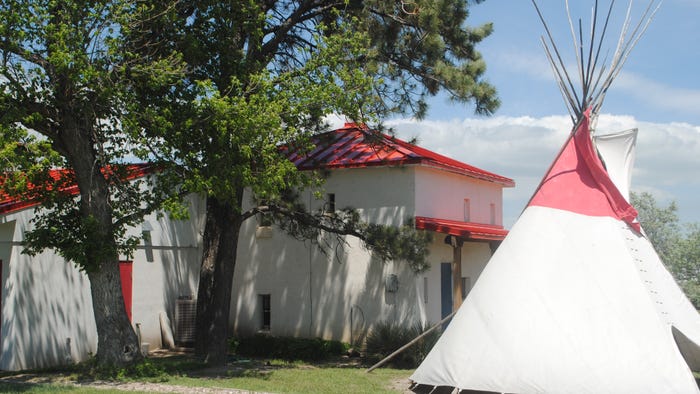
The Museum of Fur Trade on the east edge of Chadron, Neb., is truly a national treasure. It chronicles the lives and times of fur traders and trappers, those original mountain men, in a complete and detailed way that no other exhibit or museum could replicate.
As one of the first and largest businesses in early America, it is difficult to overestimate the importance of that fur trade industry to the country in those early days. Established in 1949, the Museum of Fur Trade was founded by Charles E. Hanson Jr., who grew up reading all he could about the West, selflessly devoting his time, money and energy for 48 years to serve as museum director, board secretary and president and publication editor. Today, the museum boasts more than 6,000 primary pieces, gathered one piece at a time.

FIREARMS HALL: Steerman Firearms Hall at the museum is dedicated to those early rifles of the fur trade days.
When you enter the museum, you are greeted into the main exhibit hall, with historical objects crucial to the fur trade displayed in chronological order. You won’t want to miss “The Voyageurs” exhibit in Lindeken Exhibit Hall, beautifully commemorating the canoe men who moved the fur trade goods and furs across the continent.
Bevin B. and Maxine Bump Exhibit Hall highlights textiles as the single most important class of goods traded to American Indians, and the Museum of Fur Trade claims the most comprehensive collection in the world.

HISTORIC LOCATION: The museum is located on the site of the James Bordeaux Trading Post, established in 1837 as a site for the American Fur Co. Outdoor exhibits highlight this important history.
But we can’t forget about the guns. The Steerman Firearms Hall contains the largest and most complete collection of guns made specifically for Indians — such as the Northwest gun, Kentuckies, Hawken rifles, buffalo guns and many more.
Outside the main museum is a self-guided trail to highlight the history of the Bordeaux Trading Post. The museum is located on the James Bordeaux trading post location, established in 1837 as a site for the American Fur Co.

FUR TRADER’S WORLD: Outdoor buildings and exhibits include a reconstructed trading post, warehouse, trade room, living quarters and Indian Heirloom Garden.
Today, the trading post has been painstakingly rebuilt to provide visitors a real-life glimpse into the days of the fur trader. The trail includes a rebuilt post, plus a warehouse, trade room, living quarters, robe press and an heirloom garden dedicated to Plains Indians.
Learn about the museum and the Bordeaux Trading Post history at furtrade.org.
About the Author(s)
You May Also Like






